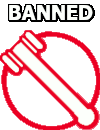1. What is fueling this bull market
As far as for influence in the S&P 500, the stock markets and risky assets in the US there's no international factors that exist but for war. If war kicks in, as we've seen with Ukraine in terms of its impact on oil, oil price and various other things, if China gets scary in terms of Taiwan, yeah, it might have an impact (negligible).
But that's more of a function of the fiscal changes that the US has to put on its books in response to the national defense. But as far as any sort of monetary change, they just don't exist. You could actually say that if you identify that there's such a thing as a global liquidity, that's a spurious correlation.
If you search hard enough, you can find indexes after the fact, even after the fact might be five minutes. But after the fact, you can get all sorts of neat indexes, like what's the coffee price influence on steelmaking in the United States? Everything comes in and out.
But the thing is, is what's the Federal Reserve up to in terms of its actual cash flow? There's no such a thing as a fed induced liquidity (no matter what wingcucks on either end of the political spectrum neolibs vs AnCaps tell you). The Fed and if you just deal with just the United States, the Fed, not since World War II (and they didn't even do it during this COVID period), has actually put money into the country.”
Regarding what they have put in, they're mostly a very small trim tab, which because of the law that divides mandatory discretionary spend from Congress does have influence. They can tighten, they can ease, but it's a small fraction of what the actual innate US economy is doing
Now, if Congress, like the Soviet Politburo, is tied up in a five-year forward plan of what they can spend and not spend, you can have some forward look in terms of what that's going to be, then yeah, the Fed matters.”
They can have an influence. Volcker proved it with what he did, but by the way, that's the only time the Fed's ever proven that they can handle inflation More on that below). They thereafter acted like a trim tab, where they just did a very small amount of tightening or easing, which influenced the market that gave the forward expectations thesis, that's the New Keynesian thesis, which has actually just gotten out of hand totally, which is that the forward expectations of what the Fed's going to do is all that counts.
It's the federal government's bank is what the Fed is. It was never a policy maker. What's happened is that given what happened with the GFC and the Fed moved to a completely, radically new way of operating, which is called Neo-Wixel-Woodford, or whatever you might want to call it, and there's a lot of material that started with Woodford's 2012 presentation at Jackson Hole, where the Fed just shifted to forward markets. (Attached - Michael Woodford's paper on Forward Guidance, presented at the Kansas City Fed Meet, 2012 in Jackson Hole. Read it if you want; I glossed over and rolled my eyes so many times within the first 10 pages I have no interest in going through the whole thing: https://www.kansascityfed.org/Jackson%20Hole/documents/6930/Woodford_JH2012.pdf ).
They can just set down the framing of what they can do. And that's supposed to be monetary policy. Well, that, from any rational point of view, means that the Fed has just given up and left the play field.
That, especially when there's an exogenous shock like COVID looming over and the Fed's not evolved, signals what their power truly is. They're always just a small trip tap, so if they actually expect that forward expectation management is all they have to do, well, sooner or later, people start to poke at it. And then more and more poke at it, and they say, okay, things are great two years from now or a year from now.
Yet sentiment matters, and the Fed is the principal definer of sentiment right now. And last week (after the markets held steady even after rates were not cut and there was an indication that it might even go up) was the start of the end of that grip on the market. It was almost like a near panic among Fixed Income hustle and bustle cels.
Yet everything the Fed did was clearly orchestrated. Everyone had like six talking points in front of them before they go out. There is no independence with all the FOMC and the regional Fed governors.
Unless there's like a two to three trillion dollar tightening that comes from, and at this point, only Congress can deliver that, the stock market has only one way to go. Now, it might be that the nominal growth might be inflationary, it might not, but the stock market is going to continue to go up.
2. But what is the Fed then?
What happened in the 70s, this is the fundamental object lesson of monetary policy is every time there was the slightest hint that the economy could be turning down, the Fed lowered rates and then inflation came back up and then they increased rates. And the issue is when the Fed doesn't look like it's resolute on inflation, inflation doesn't come back to where it was before, it comes to higher than it was before, which means that every time to fight it, you've got to take rates even higher, which means that the damage you do to the economy is even more. And so letting it, expectations spiral out of control, I think is just a very risky thing for the economy.
And that's not some theoretical model. People actually lived through in the 70s. Volcker buck broke the economy under Carter and Ford but neither of the trio get the recognition they deserve. 😞
The overall story that inflation is moderating is still the right story. But the not dumb people have long been of the view that inflation has been, and will be more stubborn to come back to 2% than everyone would like. And in particular, in the last half of last year, part of the reason the numbers came back so nicely was that goods turned deflationary and that offset still higher than normal levels of inflation on services and shelter.
Now, in the 2000s, there was healthcare inflation that was quite significant and much more than it was in the 90s. But goods price deflation came down. So the basket does shift and it's fine if it shifts, it just needs to get to 2% overall. Frick it, we ballin on averages, cuz.
And so that makes policy pretty straightforward with today's world, which is, you have restrictive rates and you want to be restrictive and bring inflation down.
Thus there would also seem to be a disconnect between a certain number of Fed officials who will say policy is restrictive versus looking at something like that financial conditions index, or even the amount of refinancing being undertaken by like the corporate bond market or the loan market recently. So there are many financial conditions indices. Some of them show looser than others. As it should. It's miscalculation and hand waving from them, it's almost a schizophrenia inducing cognitive dissonance among ABS/MBS and bond traders. They have no clue wtf is going on and how to interpret yield curves anymore.
3. WTF is a housing market bubble (Section only for zoomers and below 60 IQ) !r-slurs
But how much a restrictive policy today restrain the housing supply of tomorrow; whether it's like a multifamily house, where there has been recent data that new multifamily development has really fallen off quite a bit. And in theory, that means housing becoming more scarce in 2026
And when fed started raising rates, the country was in the middle of as frothy a period in the housing market as it could have gotten. On an average, 12 bids per house. Houses going for $40,000 over listed price.
As of late, single family starts are quite strong and much stronger than normal in this cycle, in part because I think availability of existing homes has been so low. And multifamily starts have come down a bunch, but that was from a very, very high peak.
And so they're not that far off today where they were before the pandemic.
If the economy continues to be as robust it is with rates where they are, that'll tell you something. (Spoiler - Housing will not come down)
A. Productivity would be a very simple way to explain the change. A higher productivity economy is a higher trend growth economy, which would do it. Something something solow model or sumthn.
But coming back to inflation. Why is it set around 2% by the Fed?
First: IDK.
Second: It has worked for 30 years
Third: It's a good number to measure deflation
A good example would be encyclopedias. I used to buy encyclopedias, so did you. (Pre 2000s born). No one buys an encyclopedia today. It's on your phone. And so it's out of the index. And so it's gone from being whatever it's price was, say $399 to zero. That's deflation, but it's out of the index. And so speaking more about tech, actually, you're not buying a camera anymore or film. It's taken a set of things out of the index, deflationary.”
If you set a target at zero and you don't hit it exactly, you're in deflationary territory. And deflation is where everything tomorrow costs less than it does today. So the incentive to buy today goes down, which means an economy tends to stagnate.








Jump in the discussion.
No email address required.
"The Fed and if you just deal with just the United States, the Fed,..." It's hard to take you seriously when you speak in r-slur
Jump in the discussion.
No email address required.
Sorry, it's Friday night and I wrote this in as short a time period as I could
Jump in the discussion.
No email address required.
More options
Context
More options
Context